We may earn commission from links on this page, but we only recommend products we back.
Editor's Note: This article was originally published in August 2021. While our choices are still valid, you may want to check with manufacturers and your tire retailer for updated versions of these tires before buying.
’
Getty ImagesBuying new tires can be a daunting experience. You face a bewildering array of brands, sizes and tire types to choose from, so it's easy to be confused. But don't worry: this guide will provide you with the essential facts you need to in order to make the right tire choice for your vehicle at the price you want to pay.
Before you buy, you'll need to know the answers to the following questions:
Already know about tires and just want our top picks? Our favorites in each category are listed below. Further down, you'll find more information about all-season, summer, and winter tires plus our top alternative picks in each category.
Best All-Season Tire
$100 at Amazon
Credit: AmazonBest Summer Tire
$332 at Amazon
Credit: AmazonBest Winter Tire
$307 at Amazon
Credit: AmazonIs our top pick unavailable in the size you need? Looking for a fast, easy way to sort through the dozens of alternatives? Then go to Tire Rack's Tire Decision Guide. The company says it'll have a list of appropriate alternative choices for you in two minutes or less. The tirerack.com site is also deep with important consumer data, including tire warranties, treadwear guarantees, and tire-test results.
$200 at Amazon$201 at Walmart
Credit: Amazon$138 at Tire Rack
$448 at Amazon
Credit: AmazonThe vast majority of vehicles today come with all-season tires, which are designed to provide acceptable all-around capability throughout the year and in all weather conditions.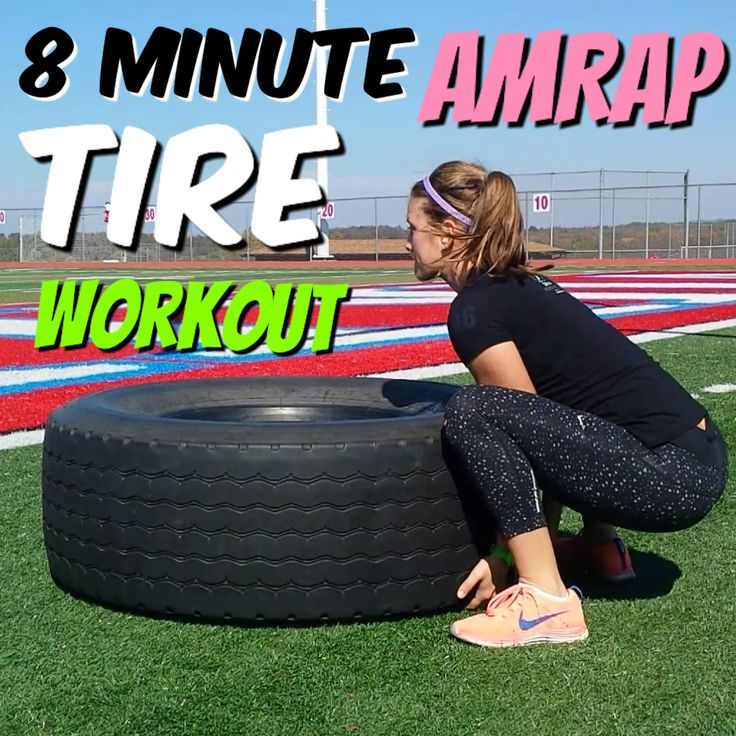 That means a reasonable ride and respectable handling, quiet running, good wet-weather grip, and some capability in snow. Given their all-season designation, most car owners leave them on in winter and expect that their tires will deliver all the traction they need on snowy, icy roads. But most all-season tires are marginal in snow; dedicated winter tires, also known as snow tires, provide far better traction when the snow falls.
That means a reasonable ride and respectable handling, quiet running, good wet-weather grip, and some capability in snow. Given their all-season designation, most car owners leave them on in winter and expect that their tires will deliver all the traction they need on snowy, icy roads. But most all-season tires are marginal in snow; dedicated winter tires, also known as snow tires, provide far better traction when the snow falls.
There are now two main sub-categories of all-season tires: high-performance all-seasons and grand touring all-seasons. High-performance all-season tires provide sharper handling than "standard" all-season tires. They grip the road more confidently and feel more sporty to drive—usually at the expense of some winter-weather traction. These tires are intended for sportier cars and more-aggressive drivers. Grand touring all-season tires have the lower-profile look of high-performance all-season tires but ride better at the price of some handling ability.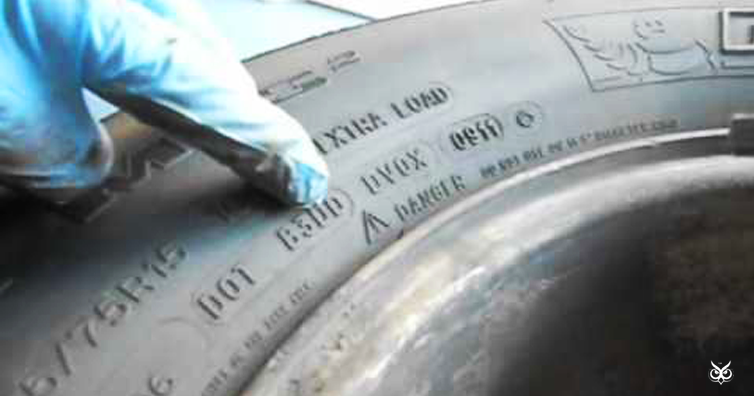
Recently, a subset of grand touring all-season tires has emerged that we call “all-weather” tires. These tires feature snow traction that almost comparable to that of pure winter tires while offering similar performance in other areas as conventional all-season tires. They are designated by a snowflake-within-a-mountain symbol on the tire's sidewall.
$327 at Amazon
Credit: AmazonNow 22% Off
$199 at Amazon
Credit: Amazon$211 at Tire Rack
This term is a misnomer, as this type of tire should rightly be called "three-season" rubber. Summer tires are designed specifically to deliver dry- and wet-weather traction in moderate or warm weather. They sharpen steering response, increase cornering traction by an order of magnitude, and stop your vehicle in much less distance.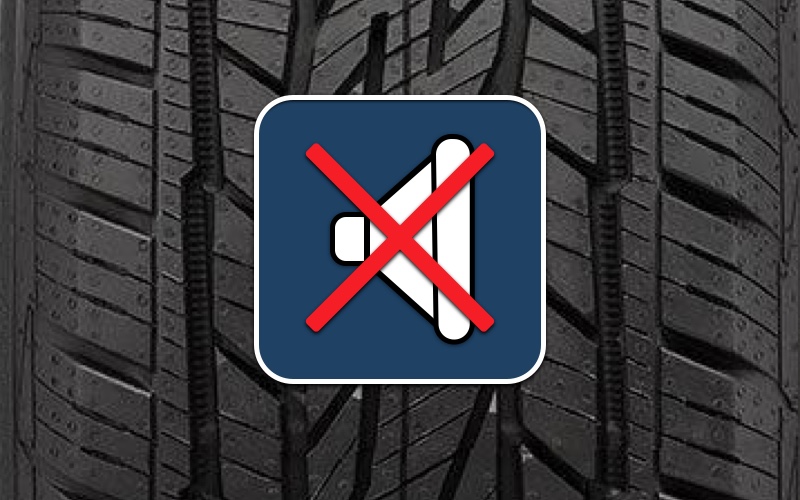 But they do so at a cost: most summer tires only work well at temperatures of about 40 degrees Fahrenheit and above. As outside temps fall toward freezing, the tires can feel skittish and behave inconsistently; they lose a large portion of their grip to the point that they act like they are on a wet or even icy road. More than one driver of a powerful car, unaware of the temperature sensitivity of its summer tires, has lost control and crashed on a cold day.
But they do so at a cost: most summer tires only work well at temperatures of about 40 degrees Fahrenheit and above. As outside temps fall toward freezing, the tires can feel skittish and behave inconsistently; they lose a large portion of their grip to the point that they act like they are on a wet or even icy road. More than one driver of a powerful car, unaware of the temperature sensitivity of its summer tires, has lost control and crashed on a cold day.
As with all-season tires, summer rubber comes in several varieties. Tire Rack divides these tires into three main groups by escalating capability: ultra-high performance on the bottom rung, followed max performance and extreme performance. Summer tires come on cars such as Porsches, Corvettes, Mercedes-AMGs, and Mustangs.
Winter TiresNow 15% Off
$141 at Amazon$183 at Walmart
Credit: Amazon$208 at Amazon
Credit: Amazon$469 at Amazon
Credit: AmazonCalled "snow tires" in the past, winter tires are designed to provide maximum traction in snow and in slippery winter conditions—and the traction they provide in those situations is not matched by any other category of tire. Even an all-wheel-drive vehicle on all-season tires cannot match the stopping or turning capability of a similar two-wheel drive vehicle fitted with four winter tires, a point we have proven in our own winter-tire testing.
Even an all-wheel-drive vehicle on all-season tires cannot match the stopping or turning capability of a similar two-wheel drive vehicle fitted with four winter tires, a point we have proven in our own winter-tire testing.
Winter tires are designed to work well in the cold-weather months, but they don't handle or wear as well as all-season or summer tires once the weather warms up. They should be considered as a second set of tires for your vehicle if you live where snow flies annually. We fit all of our long-term test vehicles with winter tires and they've proven their worth many times over.
Why use winter tires? If you live in the northern states, we recommend purchasing a set of winter tires. Their deep treads are engineered to deliver a significant traction improvement, and do they ever work. You'll feel safer and be safer, not to mention more relaxed when driving in snow. Retailers such as Tire Rack will sell you a set of snows mounted on steel wheels that you can swap on when winter rolls around. Here at Car and Driver, we swear by them.
Here at Car and Driver, we swear by them.
Tire Size and Other Factors
Most consumers choose to replace the worn tires on their vehicle with something equivalent in size and capability. This makes a lot of sense; your car was engineered to work well on the type and size of tires it came on, so fitting an identical or similar replacement set would maintain the performance and safety your vehicle was designed to deliver. (We'll get to upgrading later on).
To inform your decision process, you'll need to know your vehicle's tire size and speed rating, and you'll also want to consider how many miles you'll get out of any new tires you are considering (this is called tread wear). Much of that information is printed on the sidewalls of the tires that are on your car right now.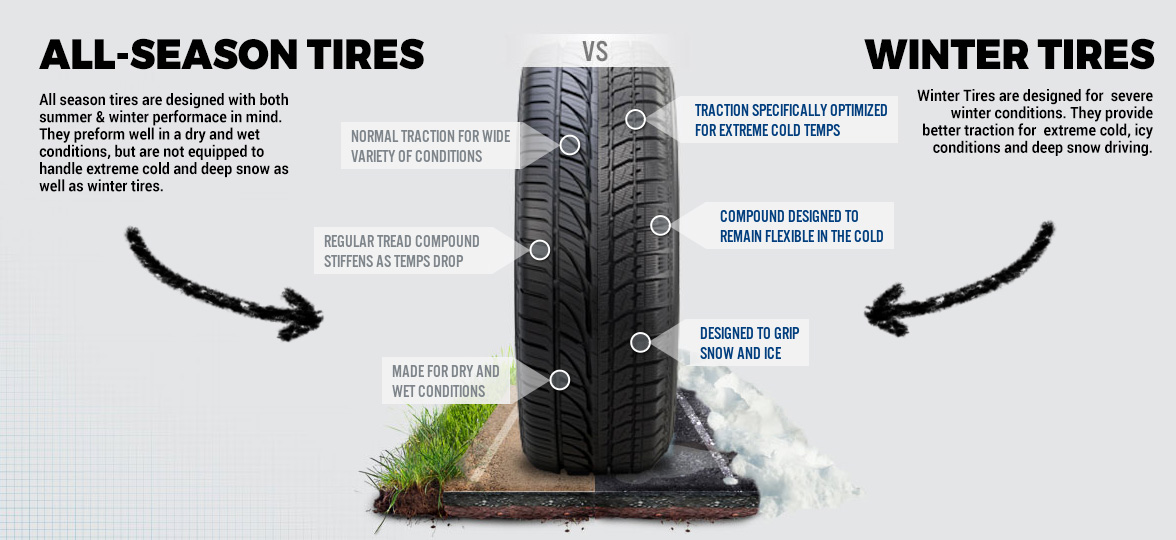 It's also available in most owner's manuals, online, and at tire dealers. (We suggest cross-checking those sources to make sure you've got the right information.)
It's also available in most owner's manuals, online, and at tire dealers. (We suggest cross-checking those sources to make sure you've got the right information.)
Here's how to read the most important data imprinted on your tires' sidewalls. (For an in-depth look at how to read all of the information on a tire sidewall, click here.)
KEY: 1) Tire width; 2) Aspect ratio; 3) Radial-tire designation; 4) diameter; 5) Load rating with speed rating; 6) Heaviest spot on tire; 7) Tread-wear rating; 8-9) Traction and temperature ratings; 10-11) Mud-and-snow or three-peak-mountain rating; 12) Vehicle-specific marking; 13) Tire-materials list and manufacturing information
Tire SizeIf you're going to replace your tires with something equivalent, you will need to know the proper size. The size of car and light truck tires is usually expressed in a short series of numbers and letters that read like this (as seen in the above illustration): 245/40-R18. The first number indicates the width of the tire at its widest point in millimeters. The number after the slash is what's called the aspect ratio, which indicates how tall the sidewall is as a percentage of the width. The higher the number, the taller the sidewall. The squat tires fitted to sports cars and muscle cars, called low-profile tires, have aspect ratios of 30–40. Family sedans and SUVs are in the 45-60 range or taller. The final number in the series is the diameter of the wheel in inches that the tire must mount to. The "R" indicates it's a radial tire, which virtually all of today's tires are.
The first number indicates the width of the tire at its widest point in millimeters. The number after the slash is what's called the aspect ratio, which indicates how tall the sidewall is as a percentage of the width. The higher the number, the taller the sidewall. The squat tires fitted to sports cars and muscle cars, called low-profile tires, have aspect ratios of 30–40. Family sedans and SUVs are in the 45-60 range or taller. The final number in the series is the diameter of the wheel in inches that the tire must mount to. The "R" indicates it's a radial tire, which virtually all of today's tires are.
Tires also carry a speed rating, which indicates not only how fast they can safely go for an extended period of time, but also the overall performance potential of the tires. Tires for high-performance cars have a higher speed rating than those for mainstream family sedans and SUVs. The speed rating of the original tires that came on your car were matched to the maximum speed the car could attain—plus a significant built-in safety margin.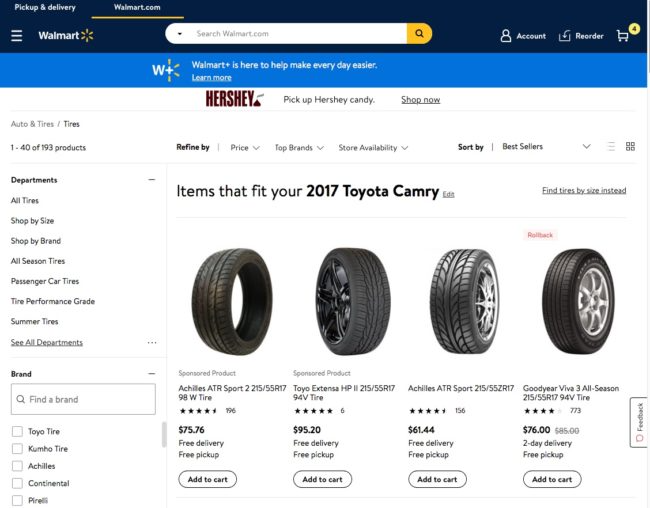 This speed rating is expressed as a letter in the alpha-numeric code that immediately follows the tire size. Letters range from L to Y, and cover maximum speed ranges from 75 mph to more than 186 mph.
This speed rating is expressed as a letter in the alpha-numeric code that immediately follows the tire size. Letters range from L to Y, and cover maximum speed ranges from 75 mph to more than 186 mph.
The are two pieces of data that will help you estimate how many miles you can expect from a set of tires: the tread-wear rating and the tire mileage warranty. The tread wear rating is listed as a number on the tire sidewall after the word "treadwear". The higher this number, the more likely the tire will last longer. But the tests that are used to determine treadwear aren't precise, so there is a lot of variability in this number.
A better way to gauge potential tire life, and to compare the expected longevity of different tires you might be considering, is to look at the manufacturers' tread-life warranties. Many but not all tires carry a tread-life warranty in addition to manufacturing-quality/defect warranties. This information can be found online (like this example from tirerack.com), or in the tire maker's marketing materials. The industry's general rule is that about three-quarters of all drivers will find that their tires last at least last as long as the mileage listed in the tread life warranty. Generally, if your tires wear out before the guaranteed mileage bogey, you can get a credit for the percentage of miles you came up short, which you can then apply to the purchase of a new tire. (Tire dealers routinely handle this transaction.)
This information can be found online (like this example from tirerack.com), or in the tire maker's marketing materials. The industry's general rule is that about three-quarters of all drivers will find that their tires last at least last as long as the mileage listed in the tread life warranty. Generally, if your tires wear out before the guaranteed mileage bogey, you can get a credit for the percentage of miles you came up short, which you can then apply to the purchase of a new tire. (Tire dealers routinely handle this transaction.)
Numerous automakers fit their cars with run-flat tires from the factory. These tires are capable of driving for short distances at low speeds even after a puncture has left them without air, allowing you to reach home or a repair facility without needing to change a flat on the side of the road. If your vehicle came on run-flats you have the option of replacing them with conventional tires and carrying a spare (but beware that some cars fitted with run-flats actually do not have a trunk compartment for a spare). Or, you can replace your worn run-flats with another set of run-flats. And now that tire-pressure monitoring systems are compulsory equipment in new cars, you could even fit run-flats on a car that didn’t originally come with them.
Or, you can replace your worn run-flats with another set of run-flats. And now that tire-pressure monitoring systems are compulsory equipment in new cars, you could even fit run-flats on a car that didn’t originally come with them.
Run-flat tires do have downsides. Their stiff sidewalls, which are required to hold the tire up when deflated, tend to make the car ride noticeably harder over rough pavement, but tire tech is continually improving and run-flats aren’t nearly the penalty they were a decade ago. Choice is also more limited than with conventional tires and run-flats are premium-priced. In general, we'd recommend swapping to conventional tires and carrying a spare or mini-spare if possible.
There's one more decision you need to make: do you simply replace the tires on your vehicle with something equivalent, or upgrade?
If you're going to replace what came on the car with something equivalent, you're ready to go. Peruse the online resources like Tire Rack to compare tires, and then either buy from one of them or head to a local tire store. The advantage of buying online is that you can get the exact tires you want; different brick-and-mortar tire stores sell different brands of tires. The online retailers have relationships with the chain tire stores, which will mount the tires you bought on the internet on your wheels (for a small fee) even though you didn't buy them there. Tire Rack has a decision guide to help you find the tires that fit your car.
Peruse the online resources like Tire Rack to compare tires, and then either buy from one of them or head to a local tire store. The advantage of buying online is that you can get the exact tires you want; different brick-and-mortar tire stores sell different brands of tires. The online retailers have relationships with the chain tire stores, which will mount the tires you bought on the internet on your wheels (for a small fee) even though you didn't buy them there. Tire Rack has a decision guide to help you find the tires that fit your car.
This is more complicated than simply replacing your tires, as you have several ways to go. You can choose a higher-performance tire of the same size on your current set of wheels by substituting, say, a high-performance all-season tire for a standard all-season—if you can find one that fits exactly. Or you can choose a set of wider, lower-profile summer or high-performance all-season tires, but this is trickier. You need to know if the tires will fit without rubbing on the suspension or body parts—a definite safety issue. Here, consulting one of the experts at Tire Rack is a must, as they have this information for many cars. You can also try checking an online forum for your make and model of car (if one exists).
You need to know if the tires will fit without rubbing on the suspension or body parts—a definite safety issue. Here, consulting one of the experts at Tire Rack is a must, as they have this information for many cars. You can also try checking an online forum for your make and model of car (if one exists).
Many vehicles can be had from the factory with several different tire sizes—Honda Civics, for example, come with tires ranging from 215/55-R16 to 245/30ZR-20—so going to a larger-diameter wheel might work. But know that fitting lower-profile rubber will almost always require a larger-diameter wheel. The outside diameter of your tires needs to remain constant; everything from your vehicle's suspension to its ground clearance to its gearing is affected by the overall size of the tires. As the sidewall gets slimmer, the wheel must grow to compensate. Use this size guide to see how switching to a lower-profile tire affects wheel diameter.
Wider, lower-profile higher-performance tires can also make the car ride rougher, wear faster, be noisier, and influence the steering, possibly causing you to have to make more steering corrections on the Interstate. Low-profile tires will also probably be more prone to damage from potholes, something we experienced with one of our long-term cars, which blew out a dozen of its low-profile tires in the course of 40,000 miles on our rutted Michigan roads. And they'll almost definitely be more expensive, plus you'll have to buy a new set of wheels. You'll need to consider all of these issues carefully before you make the leap.
Low-profile tires will also probably be more prone to damage from potholes, something we experienced with one of our long-term cars, which blew out a dozen of its low-profile tires in the course of 40,000 miles on our rutted Michigan roads. And they'll almost definitely be more expensive, plus you'll have to buy a new set of wheels. You'll need to consider all of these issues carefully before you make the leap.
For everything you need to know about buying and maintaining tires, click here.
Rich Ceppos
Director, Buyer's Guide
Rich Ceppos has evaluated automobiles and automotive technology during a career that has encompassed 10 years at General Motors, two stints at Car and Driver totaling 19 years, and thousands of miles logged in racing cars. He was in music school when he realized what he really wanted to do in life and, somehow, it's worked out. In between his two C/D postings he served as executive editor of Automobile Magazine; was an executive vice president at Campbell Marketing & Communications; worked in GM's product-development area; and became publisher of Autoweek.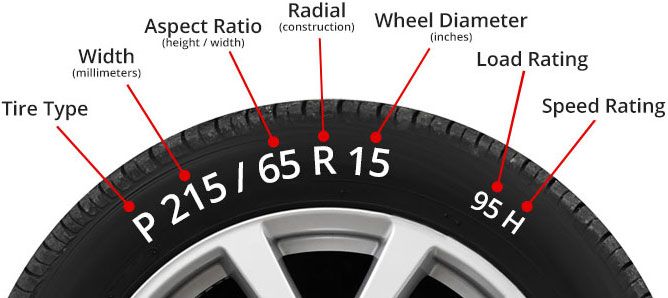 He has raced continuously since college, held SCCA and IMSA pro racing licenses, and has competed in the 24 Hours of Daytona. He currently ministers to a 1999 Miata and a 1965 Corvette convertible and appreciates that none of his younger colleagues have yet uttered "Okay, Boomer" when he tells one of his stories about the crazy old days at C/D.
He has raced continuously since college, held SCCA and IMSA pro racing licenses, and has competed in the 24 Hours of Daytona. He currently ministers to a 1999 Miata and a 1965 Corvette convertible and appreciates that none of his younger colleagues have yet uttered "Okay, Boomer" when he tells one of his stories about the crazy old days at C/D.
One of the most important purchases as car owners is tires, as this is the vehicle’s most important safety feature. Let’s face it – after the often intimidating car buying experience, the last thing you want is a repeat when replacing your car’s tires. Here are 9 important tire buying tips to make the buying experience a little better.
A Girls Guide to Cars may earn a commission from links contained on this page, but don’t worry, we only recommend products we love? And, there is no additional cost to the buyer when a purchase is made by clicking these links.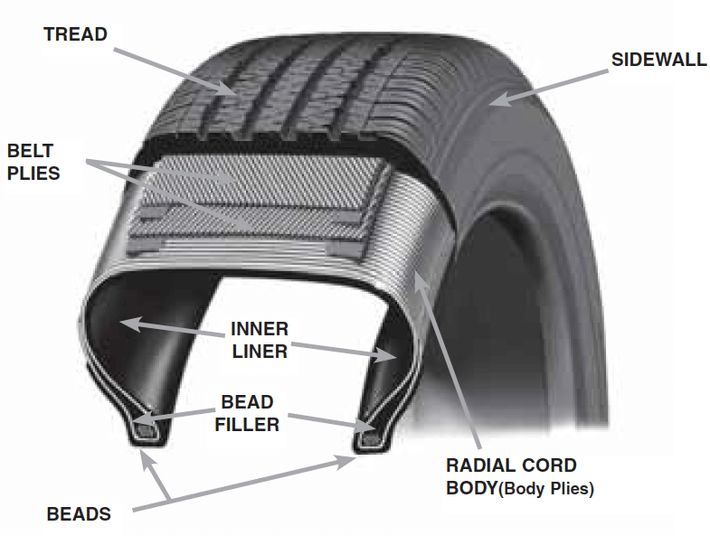
Growing up with my mechanic dad, believe me, I know the importance of good tires. It’s the only thing between you and the road. You and your family’s safety depends on good tires. Keeping them properly inflated saves fuel. Worn tread is not a good thing and can cause an accident. Yeah, yeah, check all that.
But if you’re like me, buying tires ranks right there with going to the dentist. You’d really rather do ANYTHING than make an appointment. You know you have to do it, but you put off the purchase until it’s perhaps the last minute.
Let’s remove the stress of the tire buying process with these 9 secrets you should know about buying tires.
9 Tips for Buying Tires1. All tires are not created equalYes, tires can all look alike. They are round. They are made of rubber. They have treads. And they are perhaps THE most important safety feature of your vehicle. Just like shoes, tires are made by multiple companies including Bridgestone, Continental, Goodyear, Michelin, Hercules, Dunlop, Yokohama, and more. And like designer shoes, choosing the right tire brand depends on so many facets of your vehicle and driving habits.
And like designer shoes, choosing the right tire brand depends on so many facets of your vehicle and driving habits.
For example, if you live in the northeast, winter tires with its softer rubber designed to grip on a slippery surface will give you more traction in the snow. (You wouldn’t wear stilettos during a winter snow storm, right?) If your home is in Florida, winter tires wouldn’t make any sense, while summer tires (made of tougher, more rigid rubber) might last longer in the hot weather. The most popular tires are all season (all weather) which perform well in most driving situations.
Checking the tread on the Michelins; put a penny head-down into the tread and if you can’t see the top of Lincoln’s head, your tread is good. Photo: Scotty Reiss2. Know when it’s time to replace your tiresYou don’t have to be an experienced auto mechanic to know enough to be safe. Take time to LOOK at your tires – all 5 of them! Yes, it’s important to check your spare, too.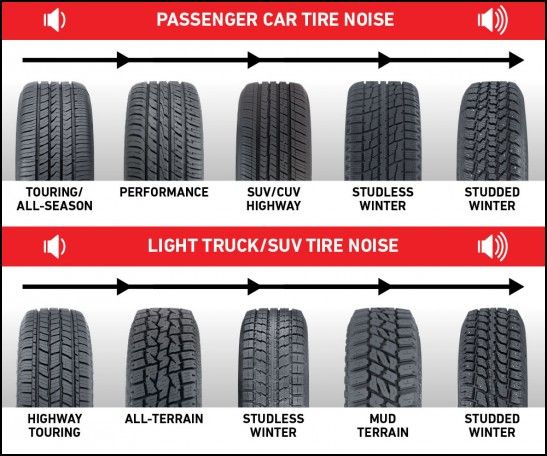 Do they look, worn or damaged? Do they pass the penny test? Insert a penny into the tire tread with Lincoln’s head pointing toward the center of the tire. If its head isn’t partially hidden by the tire, the tire needs to be replaced. And it’s okay to confirm your results and have your tires checked by a professional.
Do they look, worn or damaged? Do they pass the penny test? Insert a penny into the tire tread with Lincoln’s head pointing toward the center of the tire. If its head isn’t partially hidden by the tire, the tire needs to be replaced. And it’s okay to confirm your results and have your tires checked by a professional.
Perhaps the biggest mistake consumers make is choosing the right tire. And this is as easy as getting down and dirty to look at the code on the sidewall of your tire, a combination of letters and numbers. These indicate the size, type, and performance of the tire.
The first three-digit number in the tire size refers to the tire width. For example, my 2014 Ford Escape’s tire size is 235/45 R19 tire, the tire width is 235 millimeters, measured from sidewall to sidewall. Aspect Ratio is the ratio of the height of the tire’s cross-section to its width.
The two-digit number after the slash mark in a tire size is the aspect ratio.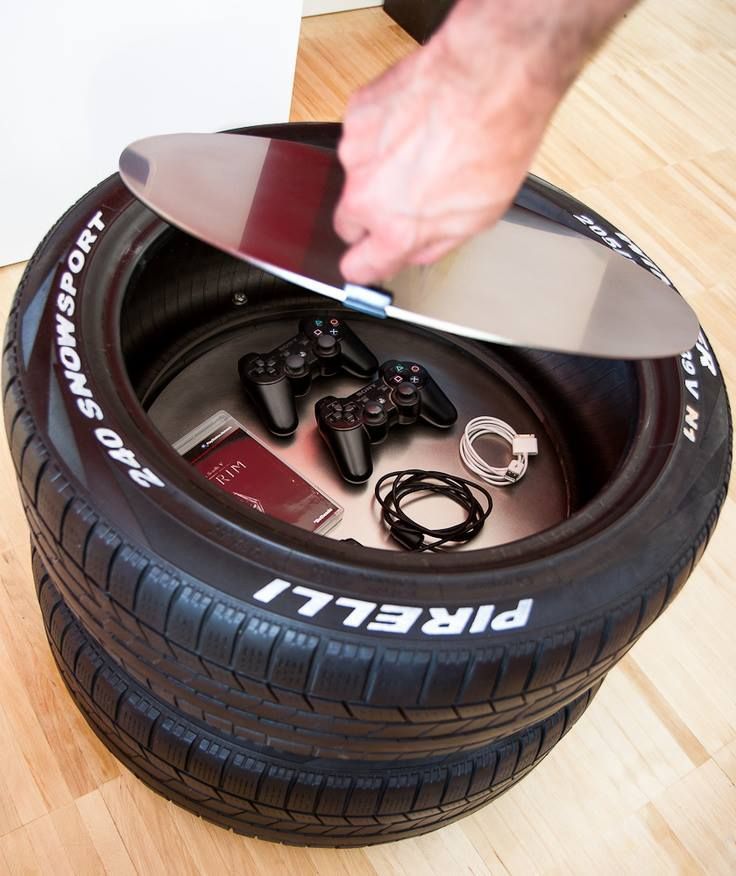 For example, in a size 235/45 R19 tire, the 45 means that the height is equal to 45% of the tire’s width. The bigger the aspect ratio, the bigger the tire’s sidewall.
For example, in a size 235/45 R19 tire, the 45 means that the height is equal to 45% of the tire’s width. The bigger the aspect ratio, the bigger the tire’s sidewall.
The letter “R” in a tire size stands for Radial, which means the layers run radially across the tire.
Wheel Diameter is the size of the wheel measured from one end to the other. This is the size of the wheel that the tire is intended to fit. A size 235/45 R19 tire is made for a wheel with a 19″ diameter.
While this may sound Auto Geek to you know, tire codes are important to know when pricing your new tires as it’s the unique descriptor.
Tire buying tips include getting down and looking at the tire codes on the sidewall. Photo: Pixabay.com4. Size does matterWhen you do finally take the step to shop around (see below), most tire dealers will ask the make, model, and year of your car. But you may still have different size options as well. Your choices may include bigger tires fill the wheel well, or smaller less expensive tires.
Whatever your choice, make sure the tires fit the recommended speed rating; can handle your car up to a designated top speed; and can accommodate the weight of your car (load rating) + passengers and gear. Check your tire’s sidewalls for these codes, or simply open your owner’s manual.
Size does matter. Do your homework when buying new tires for your vehicle. Photo: Pixabay5. Decide what you need from replacement tiresChances are you’ve been driving the car for some time. Think about your driving experience. Is something not up to par? Are you looking for a more comfortable ride? More steering control? Less noise? Longer wear? Tires that are standard with a new car are usually one size fits most, so if you feel, you might be better with a new brand, then ask your tire technician for your options when buying tires.
I recently replaced my car tires for the first time since purchasing my Ford Escape. The Continental tires worked great in the Colorado winter, driving in the mountains, and even on some off-road trips. And they lasted over 40,000 miles. So if it’s not broke, then why change the tire brand?
And they lasted over 40,000 miles. So if it’s not broke, then why change the tire brand?
Just like any consumer purchase, drivers have a lot of options. Go ahead and take the information you’ve gathered from above, and shop around. You can return to your dealership, although oftentimes this is the more expensive option. (NOTE: My Ford dealership actually offered to match any other tire quote, so ask them about price matching.)
For convenience, many consumers first consider their local tire shop or discount tire store. It’s often a matter of convenience and usually located closer to your home. Prices are usually reasonable, and I’ve discovered that the service managers or technicians are very helpful. Quotes are also as simple as a phone call or stopping by the store.
Or, you can order your tires through Amazon or a third party supplier like Tire Rack or Tirebuyer; these sites promise the lowest possible price and are great for people who have a favorite mechanic or can handle the installation themselves.
Take all your options and quotes and start reading the reviews. See what the experts say about the tires. Expensive doesn’t always equal the best tires. Sometimes inexpensive tires wear as well as their premium competitors. But sometimes you do get what you pay for.
Subscription service like Consumer Reports separate tires into categories, such as braking, hydroplaning, tread life, ride comfort, and more. But there are so many reviews out there available simply at a click of a mouse – google your car, tire brands, etc. When you’ve read all the reviews, it’ll help you understand the differences, allow you to ask for what you want, and hone in on buying tires.
8. Decide what to spendGather your reviews and compare these to your quotes. Be sure to consider a warranty when buying tires. The warranty gives you an idea of how many miles you should get out of the tires. On most cars, tires last three to four years (40,000 -80,000 miles), which is covered by the warranty, which means that you’ll get a discount toward the remaining mileage if a covered damage incident occurs. However, if you traditionally put a lot of miles on your car, consider adding hazard insurance, usually only $15-$20 per tire. Also, many of these local tire stores include complimentary tire rotations, flat repairs, and more, so be sure to ask!
The warranty gives you an idea of how many miles you should get out of the tires. On most cars, tires last three to four years (40,000 -80,000 miles), which is covered by the warranty, which means that you’ll get a discount toward the remaining mileage if a covered damage incident occurs. However, if you traditionally put a lot of miles on your car, consider adding hazard insurance, usually only $15-$20 per tire. Also, many of these local tire stores include complimentary tire rotations, flat repairs, and more, so be sure to ask!
Since tires can be a huge expense, consider financing options. On my recent tire purchase, I spent over $1,100 for 4 new tires. I had saved half of that, so instead of putting the balance on a credit card, I applied for Discount Tire’s 9 months same as cash financing program. I qualified! Just be sure to pay off the loan BEFORE the 9 months as the interest rates after the interest-free period are extremely high!
9. Purchase your tires with confidenceYou’ve done your homework. You’ve shopped around. You’ve read the reviews. Prepared your budget. Now, go ahead and take the plunge!
You’ve shopped around. You’ve read the reviews. Prepared your budget. Now, go ahead and take the plunge!
With these 9 tips for buying tires, purchase your tires with confidence and take your car on the road.
Have a thought or comment? Share it with us on social media! You can find us on Instagram, Facebook, Twitter and LinkedIn. And be sure to sign up for our email newsletter!
Table of Contents
Leading best tire manufacturers offer a variety of choices. The type of tires you buy is just as important as the brand of tires you buy.
Make sure you are purchasing the correct size tires by referring to your owner's manual or by selecting the original tires for your vehicle.
Tires don't just keep your car moving, they also play a key role in safety, fuel economy and driving experience. But with so many different tire manufacturers and tire types on the market, finding the best tires for your vehicle can be confusing.
But with so many different tire manufacturers and tire types on the market, finding the best tires for your vehicle can be confusing.
Our panel of experts have studied the availability, reputation, tire reliability and tire tread life warranties of every major tire manufacturer and in this article we will discuss the top 10 tire brands available today. We'll also look at tire types, industry classification standards, tire maintenance, and how to choose the right tires based on your needs.
Contents
Our team has carefully researched the tire market and found these popular manufacturers that offer the best tires based on overall quality, industry reputation, affordability and variety. We've highlighted five of the best brands to help you better meet your needs, but any of the brands below are worthy choices. The best tire brands, according to experts.
Michelin is the world's leading tire manufacturer and leads the industry in innovation and trust.
Michelin has a solid track record of quality and durability.
One of the most popular tire brands in the world, Michelin sells quality tires in almost every category. From studded run-flat tires to summer and all-season tires, Michelin tops the recommendation lists of both consumers and industry experts. A classic for its safety and quality, Michelin is widely recognized as the leader among tire brands.
The company offers original equipment tires and replacement tires that come with a limited warranty of up to six years against manufacturer defects. Michelin also offers long mileage warranties on many of its models, such as Michelin Defenders tires with 120,000 km. Compared to other tire brands, this warranty period is above average. Michelin tires are a great choice if you drive a passenger car, SUV, light truck or sports car.
Goodyear Tire & Rubber - Known for a wide range of tires, this company is renowned for its durability and quality.

Goodyear, another top-selling tire brand, has made a name for itself among drivers who care about durability. Founded in 1898 in Akron, Ohio, Goodyear tires are designed for all types of vehicles, including SUVs and motorsports. However, since Goodyear tires are among the best in the business, they come with a higher price tag.
The company puts its tires through rigorous internal and independent testing before releasing any models to consumers. One study by Finnish winter tire testing company Test World found that Goodyear tires outperform other brands in almost every category and condition - including braking, acceleration, handling, ice, snow, rain and dry roads. Goodyear replacement tires are also covered by a limited warranty of up to six years or a specific mileage, depending on the model purchased.
While Goodyear tires are typically priced higher than their budget competitors, the company puts its expertise into the business by creating tires that are worth the investment. Every Goodyear tire goes through extensive internal testing before being released to the market to ensure it meets the rigorous standards of braking, acceleration and handling. The Goodyear Tire Company has tires for just about every use case.
Every Goodyear tire goes through extensive internal testing before being released to the market to ensure it meets the rigorous standards of braking, acceleration and handling. The Goodyear Tire Company has tires for just about every use case.
Cooper Tires has a winning combination of price, brand reputation and popularity with automakers. They sell tires that meet almost every market requirement, from economy tires with low rolling resistance to extreme off-road tires.
Considered a newcomer tire (despite being founded in 1914), Cooper tires are significantly cheaper than most tire brands without sacrificing quality. The cost of some models, such as Cooper CS5 Grand Touring tires, depending on the vehicle and tire size.
Unlike big brands such as Michelin and Goodyear, Cooper is an independent tire manufacturer. Finding Cooper tires can be tricky as they are mostly sold online or through dealerships.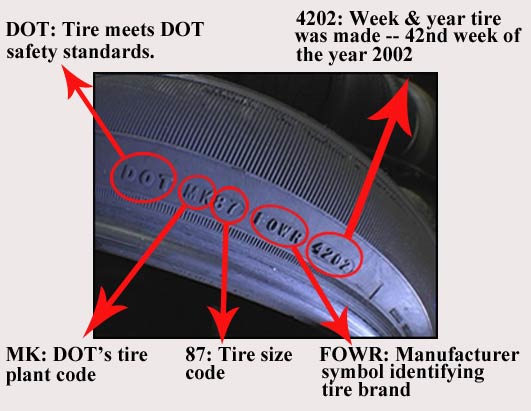 Cooper offers a 100,000 km tread warranty, depending on the model purchased.
Cooper offers a 100,000 km tread warranty, depending on the model purchased.
Cooper tires are significantly cheaper than most tire brands without sacrificing quality. Cooper wins Best Value. Cooper has a selection to suit the needs of most buyers and for all seasons. Although the Cooper Tires brand does not offer a wide range of tires, all of its tires are designed with consumers in mind. From tread warranty to Cooper tire pricing, this brand offers the best value for money tires on the market.
Bridgestone is currently the largest tire manufacturer in the world. This company offers over 100 different tire models and boasts something for every type of driver. Bridgestone is credited for inventing a new approach to winter tires in the 1990s with the Blizzak line.
Bridgestone produces tires in two brands: Bridgestone and Firestone. The companies merged in 1988 and now offer a variety of tires for cars, trucks and SUVs. Bridgestone is an innovative player in the industry and is making strides in producing greener products.
Bridgestone is an innovative player in the industry and is making strides in producing greener products.
If you live in an area with snowy and icy winters, Bridgestone tires are the way to go. The company is showing clear strength in the winter/snow tire segment, which it helped popularize.
Bridgestone also offers advanced run-flat tires for drivers who want to be safe on the road. As the name suggests, run-flat studded tires "can support the weight of a car for a short time, giving the driver about 120 km to the repair shop." If you don't want to carry a spare or just want to buy from a reputable tire manufacturer, Bridgestone is a proven option.
In addition to its premium snow and studded studded studded studded studded tires without tyres, Bridgestone also stands out for its commitment to greener practices. Over the past few years, Bridgestone has gone to great lengths to use environmentally friendly materials and manufacturing processes
Italian manufacturer Pirelli is best known for supplying high performance tires to luxury and exotic car manufacturers such as Maserati , Lamborghini, Audi, BMW and Porsche.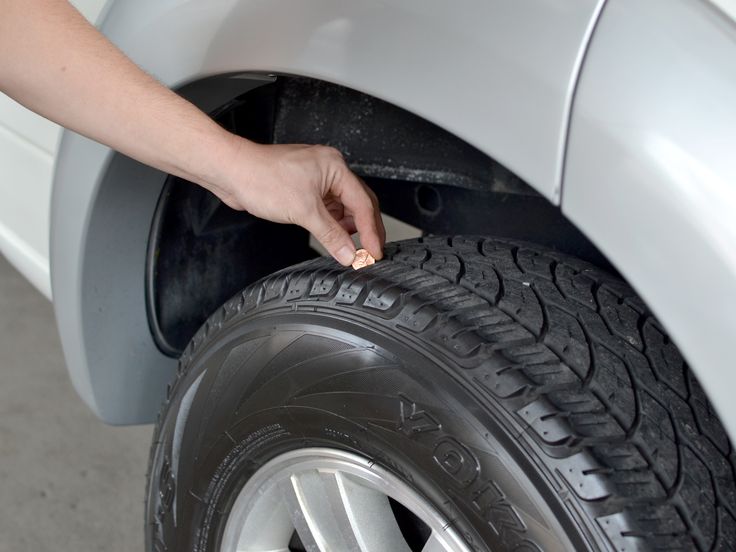 For high speed vehicles, high performance tires are a must. Pirelli tires have a special tread pattern and construction that provide excellent traction on both dry and wet roads.
For high speed vehicles, high performance tires are a must. Pirelli tires have a special tread pattern and construction that provide excellent traction on both dry and wet roads.
Despite its sporting reputation, Pirelli also makes tires for everyday cars, trucks and SUVs. However, high-quality products of this brand have a high price. While you can get premium Pirelli tires designed for cornering and speed, they won't come cheap.
Continental makes a wide range of tires, from bicycles and motorcycles to trucks and industrial equipment. Their main business is passenger tires. They have achieved great success in the automotive world.
As one of the largest and oldest tire manufacturers in the world, Continental knows what makes a good tire. Continental is known for producing exceptional tires in standard, touring and performance models.
The best tires on the market, whether they're touring or performance tires, must ensure driving safety.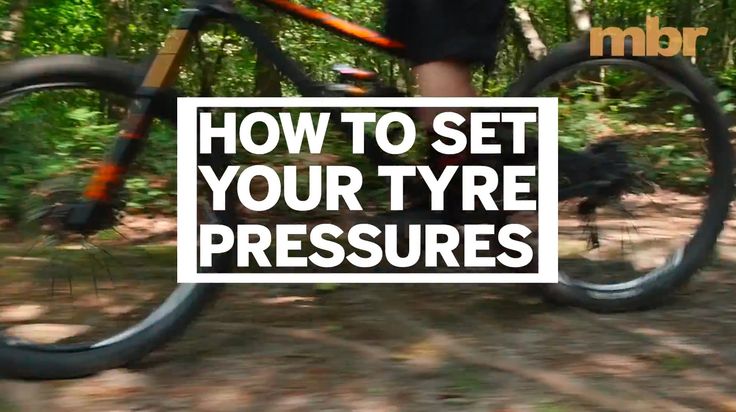 Tire manufacturers like Continental pay attention to the details. They use their own technology to create valuable tires.
Tire manufacturers like Continental pay attention to the details. They use their own technology to create valuable tires.
In the production of its high-quality tires, Continental goes to great lengths to demonstrate environmental awareness. The tire manufacturer's emphasis on safe, environmentally friendly tires that are more environmentally friendly is an added bonus.
This Japanese company manufactures high-end passenger car, light truck and truck tires. The brand is popular in racing circles, as well as in the production of passenger tires, SUV tires, light trucks and all-season tires.
No matter which tire brand you are considering, you need to know which set of tires to purchase. Tire types may vary depending on heat resistance, vehicle type, terrain and driving style. The best tires will match your vehicle and driving needs.
Below we list the most common tire types.
All season tires are generally the most popular option for regular drivers in warm regions. We recommend looking at the Michelin Defender or Goodyear Assurance Fuel Max. The Michelin model in particular boasts a 90,000 km tread life warranty.
Why spend more money on better tire brands when you can save a lot of money by buying tires from random online stores? Tires are all the same, right? Round, black and smelly.
Not so fast. There is an incredible amount of research that is only done on the rubber compound of specific tires, long before any design decisions are made about how the tread works, how the straps overlap, or how heavy the sidewall is.
Depending on the conditions of use, you can destroy a cheap set of tires in a day. Literally. If, for example, your task is to drive your car off-road, and you have chosen low-quality tires, then a sharp stone can easily punch a hole in the sidewall, and your day is over. These are the dangers branded tire manufacturers hope to protect you from when they invest in research and development.
Most tire manufacturers have several different tire models for different types of customers. Some people are just looking for a decent, safe, replacement tire for their Honda Fit, and most tire brands will be happy to provide them with one. Other tire users are looking for something more specific: a V-tread tire for their latest muscle car. Light truck tire for long road trips without much noise on the road. Off-road tire for sport utility vehicle.
Light truck tire for long road trips without much noise on the road. Off-road tire for sport utility vehicle.
Most manufacturers will have a tire that meets the needs of a given customer, but if you're stuck with a particular tire brand, it may not have all the attributes you're looking for.
We will divide our tire brand recommendations into each of the general vehicle types: Cars/Minivans, Performance Vehicles, Pickup Trucks, SUVs. We also develop recommendations for popular car models. Links to these articles with a more detailed description can be found in the sections of the site. See more information about tires for various purposes. Winter tires, all-terrain tires, all-season tires, truck tires, off-road tires
In some ways, choosing the right brand of tire for your everyday car or van is the most difficult choice you're likely to come across because virtually every manufacturer offers tires for these types of vehicles. Tires in the passenger car class are typically built to meet several goals:
Tires in the passenger car class are typically built to meet several goals:
Tread Life - Many tires in this class have a tread life rating in the 500 range, meaning they last 5 times longer than the control in testing. a 100 rated tire they tested with. All tires we have selected are rated 500.
All of these tires have been rated higher than 3.5 stars out of 5 by consumers:
 The innovative design of the CrossClimate2 includes a unique tread compound that can handle dry, wet and winter conditions with a rubber that remains flexible in cold temperatures.
The innovative design of the CrossClimate2 includes a unique tread compound that can handle dry, wet and winter conditions with a rubber that remains flexible in cold temperatures. Examples of a passenger car or minivan: Honda Civic, Mazda CX-5, Nissan Altima, Toyota Camry, Toyota Corolla, Honda Accord, Honda Odyssey, Ford Fusion, Ford Edge, Toyota Prius.
SUVs used to be just pickup trucks with a closed bed and a few seats in the back. Today, SUVs are the most competitive category in the entire automotive landscape. You can choose from any vehicle ranging from commuter cars like the Nissan Rogue to high performance SUVs like the Porsche Cayman to SUVs like the Jeep Wrangler.
Truck and off-road tires designed for heavy duty vehicles. These types of tires support not only the weight of the car, but also the load it carries. Some compact SUVs need passenger tires, but larger SUVs and vans should opt for heavy duty tires. We have listed several different types of these tires below.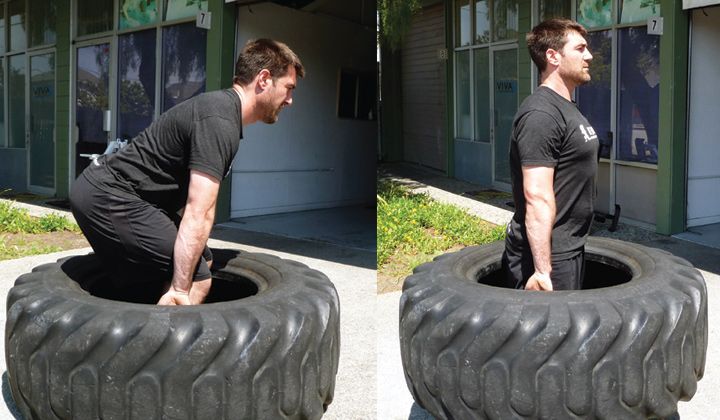
For off-road enthusiasts, the best all-terrain tires are BFGoodrich All-Terrain or Hankook Dynapro. These all-terrain tires have exceptional durability and stability built into the tread pattern. However, the Hankook model is designed for lighter loads, so it may not be the best tire for heavy commercial trucks.
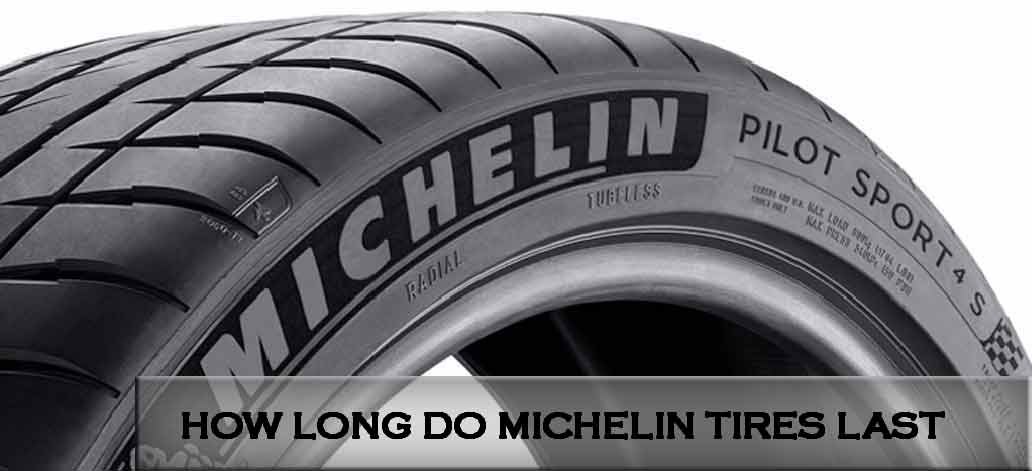
Truck and SUV examples: Chevy Equinox, Ford Escape, Honda CR-V, Jeep Grand Cherokee, Nissan Rogue, Toyota RAV-4, Toyota Highlander, Toyota 4Runner, Subaru Forester, Subaru Outback, Jeep Wrangler, Jeep Compass, Ford Explorer , Hyundai Tucson, Jeep Renegade, Audi Q5, Subaru Crosstrek, Lexus RX350, Chevy Tahoe, Honda Pilot.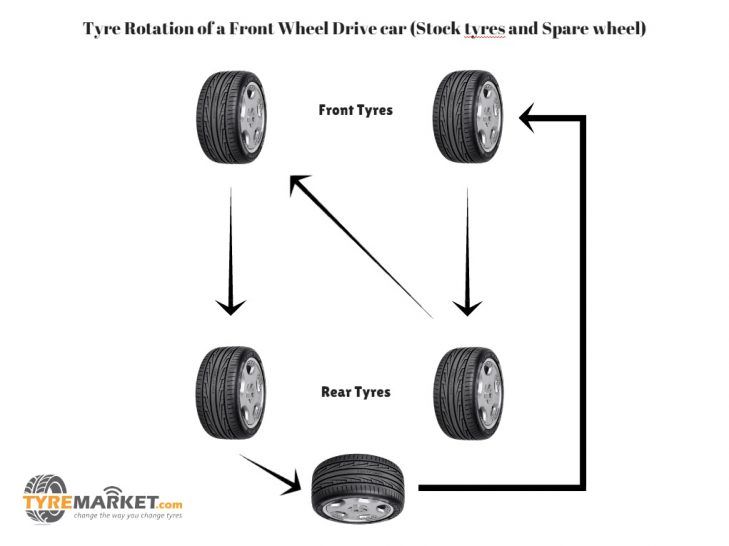
Specialty tires designed for special road conditions such as inclement winter weather or mechanical situations such as a flat tire. There are other specialty tires besides the two types listed below, but winter and spare tires are the most commonly used by regular drivers.
Although winter or snow tires are not necessary in some areas, drivers in northern areas are familiar with these special tires. For cold weather we recommend Bridgestone Blizzak WS9 tires0. The tire manufacturer has recently upgraded this iconic model for 2019 so performance is better than ever.
You will immediately notice that tread life is not a tire's strong point. Most of these tires are in the 450 range, and some can go as high as 200.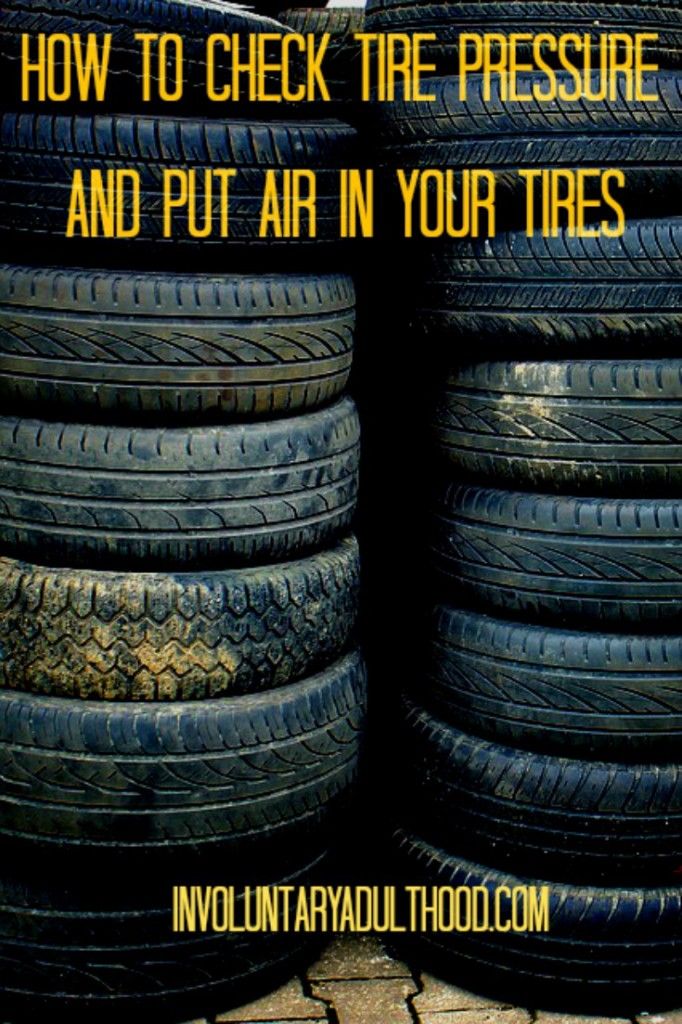 This means that some of them wear out twice as fast as regular car or touring tires.
This means that some of them wear out twice as fast as regular car or touring tires.
The advantage, however, lies in their ability to keep the road. These tires are constructed using a stickier rubber compound and in some cases a more track-oriented tread pattern, often with diagonal tread on the outside of the contact patch only, while the inside is grooved, much like F1 rain tires.
These tires are also unidirectional, meaning that when it comes time to turn them, they can only be changed from front to back, not transversely.
Performance tires on modern cars are usually 19" or 20", but you can buy 17" performance tires for your car.
All of these tires have received over 3.5 out of 5 stars from consumers:

Pickup trucks have many uses. Some pickup truck owners are interested in their ability to tow and carry loads. Some are more interested in using their pickups for fun. Instead of breaking down our tire recommendations into price categories, we'll provide tire recommendations for three of the most common uses for pickup trucks.
We'll look at tires for work, commuting and pleasure:
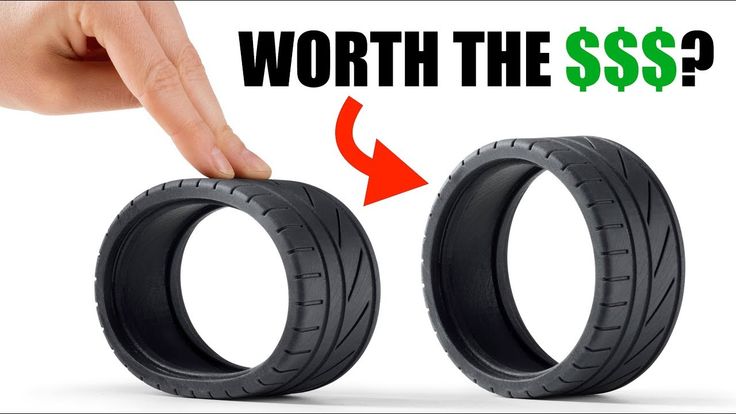 They are also cheaper than some similar brands.
They are also cheaper than some similar brands. Pickup examples: Chevy Silverado, Ford F-150, Ford Ranger, GMC Sierra, Nissan Titan, Ram 1500, Toyota Tacoma, Toyota Tundra.
Original Equipment (OEM) tires are usually supplied with your vehicle at the time of purchase. They are custom-designed by the automaker and tire brand for your make and model of car, or just plain cheap. Replacement tires - sometimes referred to as new - are more general tire models that are not suitable for a specific vehicle.
When buying tires or on tire websites, you will see the difference between these two types of tires. What tires are best for your car? It depends on the circumstances. Here are a few pros and cons of each type of tire:
| Genuine equipment tires | Spare tires |
|---|---|
| Usually required for highly specialized vehicles such as sports cars | Depending on which tires you purchase, this may change the behavior of your car |
| May be best suited to your vehicle based on their build and structure supported by the manufacturer | May be more technological and fuel efficient |
| More expensive and may require more frequent replacement | Cost less and last longer |
Most tire models come with two types of warranties: a limited warranty and a mileage warranty. A limited warranty protects you against any manufacturing defects, and most manufacturers offer this coverage for the life of the tire.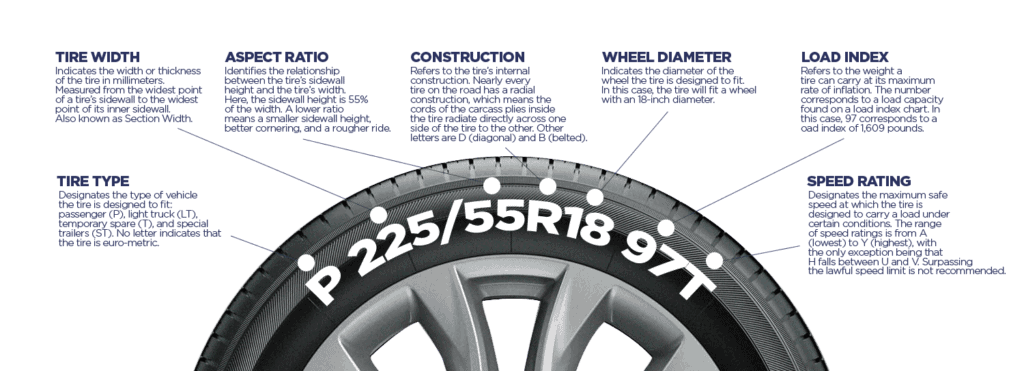 Tire life is measured by how long it takes for the tread to wear down to less than 1 centimeter, which happens about every six years.
Tire life is measured by how long it takes for the tread to wear down to less than 1 centimeter, which happens about every six years.
The mileage warranty - also called the tread life warranty - is an estimate of how long a tire's tread will last. Mileage warranties can vary greatly not only between manufacturers, but also between different types of tires. For example, all-season tires have a longer mileage warranty than performance tires because they are designed for suburban driving rather than racetracks.
A tire is a rubber or metal (for cars) casing on a wheel rim. A car tire is a rubber shell that interacts with the road surface, partially dampens vibrations and absorbs vibrations that occur due to road surface irregularities.
The tire section usually consists of: 1 - beads, 2 - bead core, 3 - carcass, 4 - belt, 5 - sidewall, 6 - tread.
Tires can be:
Along with wear, grip and temperature ratings, other designations printed on the sidewall of a tire can help you select the best tires for your vehicle.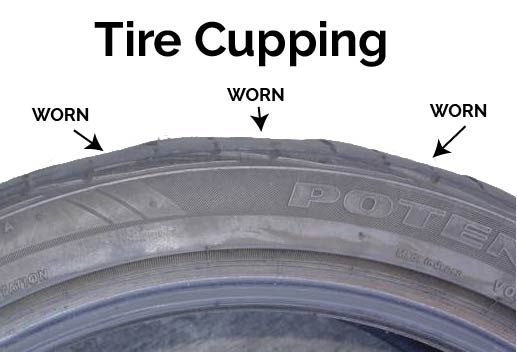 However, the list below is not exhaustive. There are several other markings that can be applied to the tire.
However, the list below is not exhaustive. There are several other markings that can be applied to the tire.
Here's an overview of the most common markings you'll see on passenger car tires:
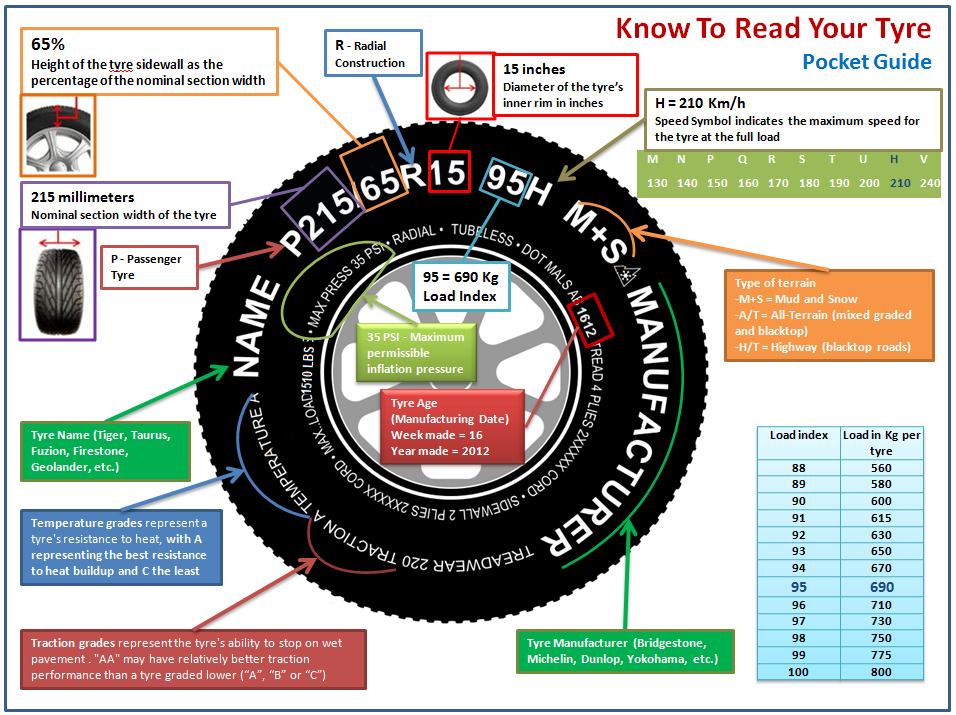 For example, an M rating would be given to a spare tire as these tires are not designed for high speed driving. Typically, car and light truck tires are rated R, S, or T.
For example, an M rating would be given to a spare tire as these tires are not designed for high speed driving. Typically, car and light truck tires are rated R, S, or T. Now that you know how to find the best tires, you need to know how to maintain them. Tires are one of the key safety components of your vehicle. Proper maintenance can lead to safer driving and better fuel economy.
Tire storage. 3 basic rules.
3 basic rules. Here are some ways to care for your tires:
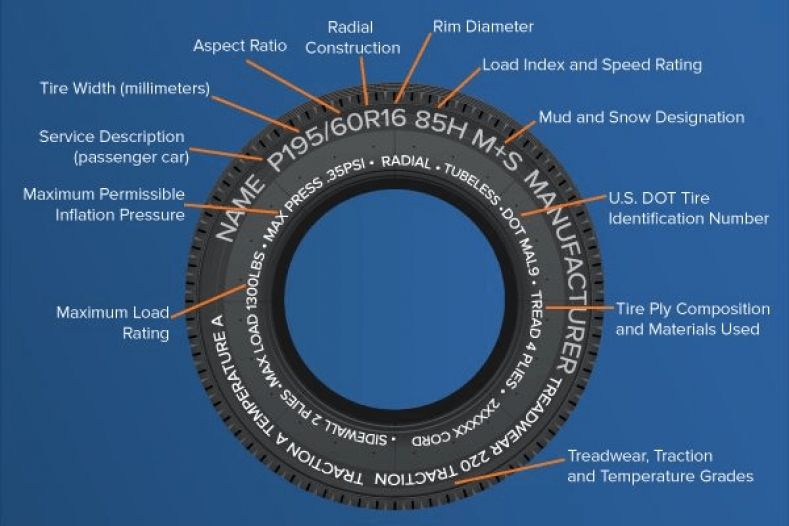 Rotating the tires according to the manufacturer's recommended schedule ensures that they wear evenly. Improper inflation and alignment can also cause uneven wear.
Rotating the tires according to the manufacturer's recommended schedule ensures that they wear evenly. Improper inflation and alignment can also cause uneven wear. Choosing the best tires depends a lot on your vehicle and driving style. The best tire for you may not be the best tire for someone else. The information above will help guide you in the right direction regarding tire types and the best brands, but you should check your owner's manual or your vehicle's tire and load information plate to make sure you are purchasing the correct size tires.
Tires are often an underestimated element of car safety. We all know that you need to fasten your seat belts, stop at a red light and follow the rules of the road. But what's less discussed is the importance of quality tires and their maintenance in getting a car safely from point A to point B. That's why investing in the best brands of tires is a responsible choice for car owners.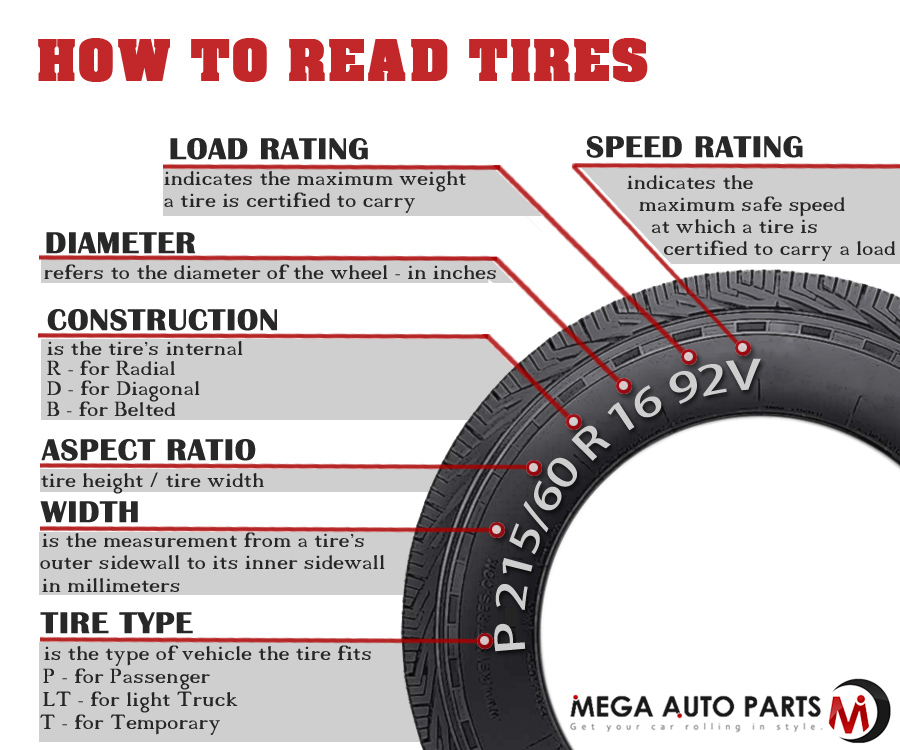
But if you don't already know what you're looking for, navigating the tire market can be confusing. There are many brands on the market, each with many options, so choosing the right tire can feel like picking a number out of a hat. To take the guesswork out of the equation and help protect your vehicle from tire incidents, we've rounded up expert opinions on the best tire brands in the industry. This page has our list, but as always, let us know if you have any recommendations we missed in the comments below.
Tires look simple and can be taken for granted, but their design can be quite complex, from the chemistry of the rubber compound to the tread pattern. Tire differences can affect braking, handling, ride, noise, and even fuel economy. Given the complexity of tire design, choosing the right replacement can be a daunting task, especially if you rely on word of mouth or in-store marketing messages. This is where Consumer Reports can help.
Our experts reviewed data from an extensive tire testing program to select the best automotive tires in several key categories: All Season, All Season High Performance, All Season High Performance, Summer High Performance, Winter/Snow and Winter/Snow High Performance. performance characteristics.
performance characteristics.
First of all, it is important to consider the type of driving and the conditions in which you will be driving. Do you mainly drive on wet or dry roads? Do you often drive on bad or smooth roads? The answers to these questions will help you narrow down your options and ensure you choose the right tire for your specific needs. If you don’t have enough to buy, you can always take an online loan on a card.
Another factor to consider is tire tread life. If you drive a lot, you want tires with longer tread life to save money on replacements in the long run. Finally, you should pay attention to the overall performance of the tires. Do they provide good grip on wet and dry roads? Do they provide a smooth and comfortable ride? By taking these factors into account, you will be able to make an informed decision and choose the best tires for your vehicle.
Through our extensive research, we have concluded that the best tires are Michelin, Goodyear, Cooper, Bridgestone and Pirelli. There are significant differences between each tire brand, so we recommend researching which one is best for your vehicle before purchasing.
There are significant differences between each tire brand, so we recommend researching which one is best for your vehicle before purchasing.
Top tire brands are Michelin, Goodyear, Cooper, Bridgestone, Pirelli, BFGoodrich, Continental, Yokohama, General and Hankook. Our team came to this conclusion by looking at each company's overall quality, industry reputation, availability, and diversity.
There is no single tire brand that will last the longest. This is because how you drive affects the life of your tires. Regular tire alignment and rotation will help your tires last longer. Regular adjustment is also part of the equation. And "durability" probably shouldn't be in the top five when buying tires. But the characteristics in dry and wet weather - yes.
The answer depends on your preferences. Online shopping makes it easy to purchase tires. But in retail stores, you can get a better deal and a more complete service. We have prepared an article on buying tires with some great recommendations. The answer really depends on your specific case. If you can find a store nearby that is an affiliate installer, then sometimes online stores are the best bet. But do not discount and retail stores.
Short answer: a brand you've heard of. There are differences between the major tire brands (Goodyear, BF Goodrich, Pirelli, Michelin, etc.) and you need to understand their pros and cons. But there is a big difference between these brands of tires and some nameless brands. To learn more about it, check out our roundup of the best tire brands of 2023
With a quick Google search, you can find out how to do it yourself. Typically, your car either has a spare tire and tools to change it, or a tire inflation kit with aerosol sealant and a compressor. If you're not comfortable doing it yourself, or if you need a new tire, check out our article on choosing a mobile tire changer so you can find someone to do it inexpensively and quickly.
Typically, your car either has a spare tire and tools to change it, or a tire inflation kit with aerosol sealant and a compressor. If you're not comfortable doing it yourself, or if you need a new tire, check out our article on choosing a mobile tire changer so you can find someone to do it inexpensively and quickly.
All of this information is on the sidewall of your tire.
Absolutely not. There are many other reasons to change tires, mainly because of the dangers on the road. Any punctures, cuts or scuffs - especially on the sidewall - should be a reason to replace at least one tire. If the tire has bulges or other visible deformations, then this is a reason for replacement.
It's always a good idea, but it's not necessarily 100%.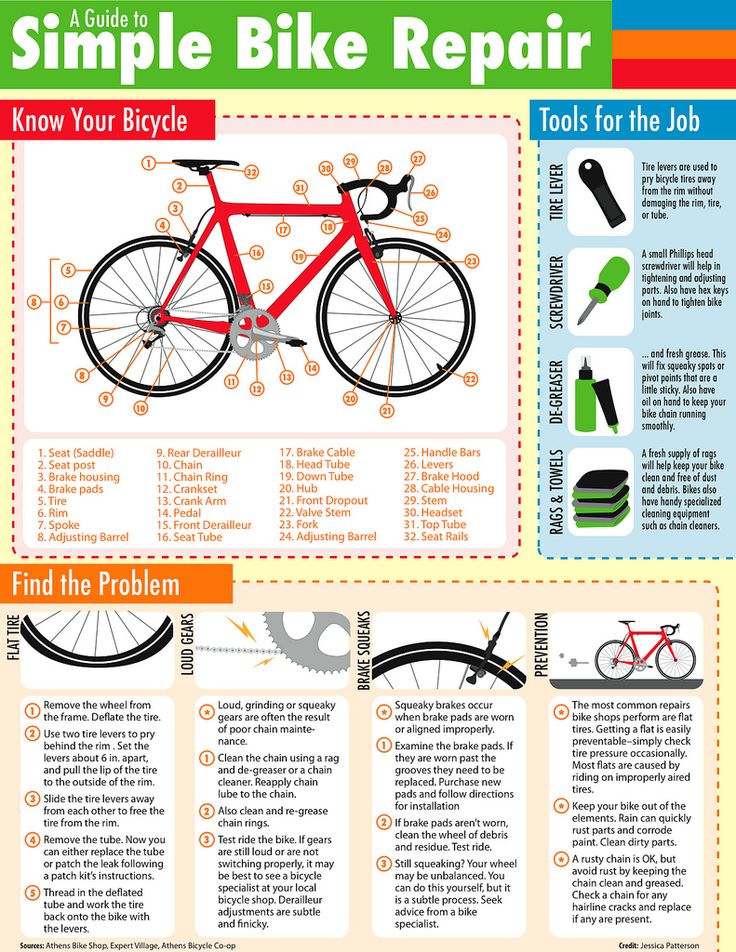 If you have one tire punctured and the other three are in good condition, there is no reason to replace all four. However, tire rotation will become much more important so that the tread on all four tires wears more evenly.
If you have one tire punctured and the other three are in good condition, there is no reason to replace all four. However, tire rotation will become much more important so that the tread on all four tires wears more evenly.
This is not a good idea. If you are going to replace two tires, then it is better to choose tires of the same brand. If you absolutely must mix and match brands, replace two tires on the same axle at once.
When the reviews write about tires with excellent grip and handling, they somehow bypass a very important point - their wear resistance and sidewall strength. After all, no matter how good the tires are in contact with the road surface, if they last a couple of seasons and they have to be changed, it’s not pleasant enough. In addition, a strong sidewall is a guarantee of disc protection.
For your choice, we have prepared a rating of summer tires with a diameter of R14-R18, where we have collected the most wear-resistant models for with a reliable sidewall. The list is based on tests, reviews, ratings and opinions of car and SUV owners.
| Ranking number | Designation |
|---|---|
| TOP durable summer tires | |
| 1 | Bridgestone Turanza T005 |
| 2 | Goodyear Efficient Grip Performance 2 |
| 3 | Dunlop SP Sport Maxx 050+ |
| 4 | Maxxis Premitra HP5 |
| 5 | Hankook K435 (Kinergy eco2) |
| 6 | Kumho Ecsta HS51 |
| 7 | Yokohama BluEarth-A AE-50 |
| 8 | Toyo Proxes CF2 |
| 9 | Nexen N blue HD Plus |
| 10 | Kama Euro-129 |
In terms of strength, tire manufacturers from Nizhnekamsk made a very worthy model for the summer for the R15, which no pit will take. The rigid sidewall will be able to prevent almost any damage. It successfully resists punctures, cuts and sprains. The tread is also quite good at coping with high loads and has a decent level of wear resistance, for which this manufacturer is loved in our country. However, the stiffness of the rubber turns into strong noise at high speed. Also in these tires it is better not to scorch on wet roads, as they are poorly adapted for maneuvers and aggressive driving, especially during cold snaps.
Kama tires get tenth place from us and open our summer tire ranking.
| Pluses + | Cons - |
|---|---|
|
Reviews about the tire Kama Euro 129
These tires have a wear-resistant tread and a very strong sidewall that will withstand any road test. You don’t have to worry about the condition of the disc if you hit a curb or run into a sharp stone while parking. The composition of summer tires is well adapted to work with primers. At the same time, the R18 model is distinguished by a rather quiet operation in comparison with competitors and a good, soft ride. On these tires, you can comfortably cross road junctions and move along a dirt road. However, accelerating on it is a bad idea, especially on wet roads. Hydroplaning protection is clearly not her forte, and when driving in the rain, you need to be especially careful.
For the right combination of strong sidewalls and reduced noise levels, we award Nexen's product the ninth place in the rating of tires with strong sidewalls.
| Pluses + | Cons - |
|---|---|
Reviews about the tire Nexen N Blue HD Plus
The sidewalls of these summer tires from Toyo are designed to withstand the toughest tests and keep the rims intact after hitting curbs and falling into a pit. Working with an uneven canvas, which Russian roads are so rich in, can satisfy the most picky owner. An additional advantage of the model will be good handling on wet surfaces, as well as decent braking on a dry road. Noise at medium speed is quite tolerable, but as the speed increases, the stiffness of the rubber will definitely make itself felt. However, at high speeds, the tires demonstrate decent directional stability. If we talk about the smoothness of the ride, then it is better to try to move more carefully on broken roads, since their ride is not smooth.
A good strong tire for the summer R15 with decent qualities on all types of canvases is in eighth place in the rating of tires with a strong sidewall.
| Pluses + | Cons - |
|---|---|
|
Reviews about the tire Toyo Proxes SF2
These summer tires are quite resistant to wear and sidewall damage. With them, the discs will be immune to most of the damage that can lie in wait on Russian roads that have not been repaired for a long time. At the same time, the R16 model has a very decent balance of characteristics and is well controlled on a dry canvas. Despite the hardness of the compound, the creators managed to ensure that it provides a soft and quiet ride for testing (for tires with a reinforced compound, of course). At low and medium speeds, road bumps - seams, pits, potholes and other violations of the road surface - will seem almost imperceptible. The disadvantages are not the highest performance on wet roads and an increased risk of falling into the “paws” of the hydroplaning effect. Therefore, only seventh place in our ranking of summer tires.
| Pluses + | Cons - |
|---|---|
|
Reviews of the tire Yokohama Blue Art A AE 50
The Korean company Kumho did a good job with the design of the summer tread and side parts to produce R17 tires with impressive properties for impact and cut resistance, as well as resistance to carcass point deformation. Discs no longer bend after shock loads and accidental hitting a curb, falling into a pit, or failing to pass road seams. However, the consequence of the reinforced compound is still the same - a very rough ride, so it's not worth accelerating on this tire, otherwise you don't even dream of any smooth ride. The tread design helps it brake efficiently on both surface options, fit well into corners in sunny weather, and also reduce fuel consumption.
| Pluses + | Cons - |
|---|---|
|
Hankook made a hard sidewall and wear-resistant tread for their summer model, and it ranks fifth in the rating for its remarkable properties. R15 tires successfully resist punctures, cuts and tread deformation, so that the owner of a car does not have to worry about the integrity of the disks if he accidentally gets into a hole or hits a curb. They are more sharpened for a dry track - it is on it that the braking and handling properties are pleasing to the eye. After the rain, the car behaves a little worse. The move is almost silent, but quite rough, so you need to be careful on bumps.
| Pluses + | Cons - |
|---|---|
|
Reviews of the tire Hankook Kinergy Eco 2
For Maxis, it has always been important to make tires for passenger cars and SUVs first of all durable, so that their owner does not doubt the quality of the products of this Chinese company. The sidewall is made of high-strength rubber, which successfully resists physical damage such as punctures, cuts, stretching, shock loads and protects the rim from deformation. The tread also resists abrasion and deformation very well during turns. However, this rigidity did not give the tires too rough walking, and if you do not accelerate the crossover, then this model can even be called very soft. True, this cannot be said about the smoothness of the course - after all, it was not possible to achieve the ideal in this. According to other characteristics, it can be noted that R16 tires are more designed for dried asphalt. On a wet canvas, they only show excellent braking, but their other properties in rainy weather are very modest.
| Pluses + | Cons - |
|---|---|
|
|
Reviews of Maxis Premitra HP 5
On the third line were summer tires from Dunlop, which entered the top three as the most durable and wear-resistant models for cars and SUVs. The Russian road will definitely not bring them surprises, since they are welded from extra-durable rubber with a large number of effective additives that allow the crossover to successfully deal with rough roads and remain intact at the same time. Rigid sidewalls will keep the disc from damage when hitting curbs, falling into a hole or during unsuccessful parking, and the frame does not deform during extreme cornering. Despite the rough handling of road bumps, the R14 shows a fairly low noise level, as well as decent protection against hydroplaning. On the wet canvas, not everything is smooth, as the braking distance and handling of the SUV in the rain leave much to be desired.
| Pluses + | Cons - |
|---|---|
|
Reviews Dunlop SP Sport Max 050+.
Manufacturer Goodyear tried to equip his new model for the summer with a very cleverly “welded” compound, which gives it excellent wear resistance and strength properties. Tires for passenger cars and SUVs can cover a distance of 55,000 km and the rubber does not deteriorate too much. The sidewalls withstand strong impacts with curbs and other road obstacles, the carcass resists deformation during sharp maneuvering. Rigidity and strength have greatly affected their acoustic comfort and ride quality in the crossover cabin, so don't expect to be completely quiet in the cabin with them. In terms of traction, they show themselves well, especially on wet surfaces, where they boast excellent braking and intuitive handling.
R18 tires are also top notch in terms of directional stability as speed increases. On the dried surface, braking properties and handling are slightly worse, and it was they who did not allow Goodyear to top the rating.
| Pluses + | Cons - |
|---|---|
|
Reviews of tire Goodyear Efficiency Grip Performance 2
Topping the list of the most wear-resistant and durable models for the summer is the manufacturer Bridgestone, which has long been famous for its thorough approach to creating a compound and frame. The result is a model with outstanding resistance to wear and damage to both the tread and sidewalls. It is almost impossible to “kill” it, unless, of course, you specifically set yourself such a goal. To this we can add that it is perfectly controlled on any type of summer surface, and also brakes quickly and efficiently on a wet canvas. Tires provide very low rolling, so you don't have to worry about fuel consumption here. The disadvantages of the R16 model is a little difficulty when driving in the rain - the handling is not the best, and the risk of aquaplaning remains.
| Pluses + | Cons - |
|---|---|
|